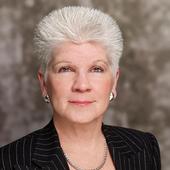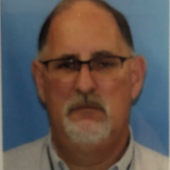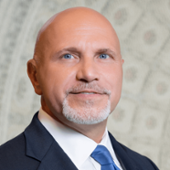Agenda
-
Registration
-
Welcome
- Session 1: The Regulatory background
-
Update on EPA’s PFAS strategic roadmap
- Overview of EPA’s PFAS roadmap
- EPA PFAS actions since October 2021
- Upcoming multi-media EPA actions expected in 2023
-
Reporting and restriction at Federal level
- TSCA Section 8(a)(7) Reporting Obligations
- TSCA SNUR Reporting
- EPCRA Toxics Release Inventory PFAS Reporting
- CERCLA Hazardous Substance Reporting
- SDWA Drinking Water Standards and Reporting Requirements
- And a Word on State Reporting Obligations
 Lynn L. Bergeson
Managing Partner of Bergeson & Campbell, P.C. (B&C®) and President of The Acta Group, L.L.C. (Acta®), Bergeson & Campbell, USA
Lynn L. Bergeson
Managing Partner of Bergeson & Campbell, P.C. (B&C®) and President of The Acta Group, L.L.C. (Acta®), Bergeson & Campbell, USA -
Activities at State Level - Maine
- Review Maine Statute requiring manufacturers to report intentionally added PFAS in products sold in the State.
- Discuss changes in the recently adopted Public Law 2023, c. 138, (LD 217).
 Kerri Malinowski Farris
Program Manager for Maine’s Safer Chemicals Program, Maine Department of Environmental Protection
Kerri Malinowski Farris
Program Manager for Maine’s Safer Chemicals Program, Maine Department of Environmental Protection -
PFAS restriction proposal in the EU – regulatory landscape and legal shortcomings
- Background and current status of the proposal
- Grouping approach
- Essential use concept
- Overlapping legislation
- Public consultation & next steps
-
Q&A
-
Refreshments
- Session 2: Scientific background and PFAS alternatives
-
Overview of recent PFAS related activities under TSCA
- TSCA related rule making activities
- National Testing Strategy updates
- Pesticide related PFAS issues including laboratory work
 Jeffrey L Dawson
Senior Science Adviser, Office of Chemical Safety and Pollution Prevention (OCSPP), US EPA
Jeffrey L Dawson
Senior Science Adviser, Office of Chemical Safety and Pollution Prevention (OCSPP), US EPA -
Fingerprinting and Finding Sources Impacting your Product
- Potential (unintentional) sources of PFAS impacting products
- PFAS fingerprinting overview and how can it be applied to products
- Analytical method and challenges for PFAS in products (i.e., what is and what is not helpful for fingerprinting)
- Sampling and analytical considerations for successful investigation
-
Options for PFAS product certification
Currently, there any many different labels and certifications for PFAS in products within the marketplace. These labels and certifications can pertain to the reduction of PFAS, the elimination of PFAS, whether or not PFAS were “intentionally added”, or the PFAS content of products; these labels and certifications can vary significantly. This presentation will look at the following:
- The different certifications that exist, what they mean, and how manufacturers or industries can demonstrate compliance with the certification requirements.
- Certifications which allow a minimum amount of PFAS to be present
- Some definitions of “intentionally-added” PFAS which can vary by state
- An overview of some of the current or proposed PFAS in product bans
-
Q&A
-
Lunch
-
SciveraLENS demo
-
The need for smart, science-based policies surrounding PFAS
- PFAS are diverse group of chemistries that are critical for many products we use every day, including cell phones, semiconductors, aircraft, electric batteries, medical devices and drugs, and more.
- We have an opportunity to appropriately define, subcategorize, and regulate this technology.
- Let’s work together toward a smarter and more effective public policy that protects human health and the environment while recognizing the many different types of PFAS and their critical uses.
 Robert J. Simon
Vice President, Chemical Products & Technology Divisions, American Chemistry Council
Robert J. Simon
Vice President, Chemical Products & Technology Divisions, American Chemistry Council -
Q&A
- Session 3: Lessons learnt from recent litigation
-
Lessons learnt from recent litigation
- Explanation of how PFAS-related litigation is different than other types of toxic tort and environmental litigation, including scope of the issue, proximate causation problems, and unconventional remedies—and why it matters.
- Discussion of range and scope of settlements in PFAS litigation.
- Recommendations for companies concerned about PFAS litigation.
-
Q&A
-
Refreshments
- Session 4: Other current issues
-
Compliance in a landscape with changing definitions – unharmonized state program impacts on markets and supply chains
- An overview of the regulations that come into effect between 2023 and 2025 and the product types covered
- Key definitions of PFAS and product types at the heart of evaluating compliance needs and supply chain management
- Intentionally added PFAS vs. non-intentional PFAS content from background and byproduct sources
- Mobile PFAS substances vs. non-reactive solid polymeric materials
- Will we follow the EU lead and treat them the same?
- Why the hazards differ
- Key elements of supply chain engagement to optimize compliance with PFAS definitions in your market areas
- Asking for disclosures and certifications relevant for different states
- When to test, and what to test for
- Preparing for the next wave of regulations and definitions
-
Life after the TRI de minimis exemption for PFAS and the associated business risks
- Components of the December 5, 2022 Proposed Rule and what it means for future reporting of PFAS under the TRI Program
- Understanding the transparency of reported TRI Data and how it is used by the public and private sectors – a critical component to understanding and getting ahead of the resulting business risks
-
Q&A
-
Close of conference





.jpg)

.png)
